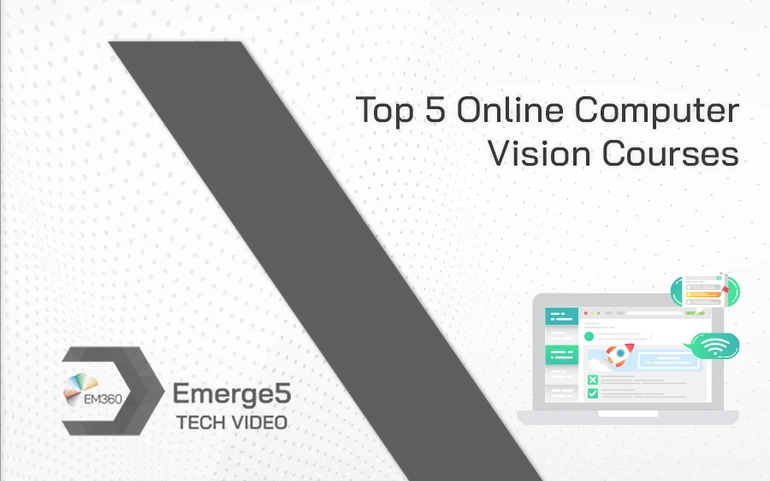
Computers have always been fantastic at understanding numbers, but their failures and limitations appear when we ask them to reason visual data. This is something humans can perceive naturally by understanding image data. However, image data is increasing at a rate of petabytes per minute, and we simply can't process it all. This is where computer vision needs to come in and drive intelligent technology over the coming years.
In this week's Emerge5, we are showing you the five best courses in artificial intelligence and computer vision that cater to all walks of life, from the beginners to the advanced. Maybe you want to play around with tools and frameworks or understand the business side of computer vision in your organisation, or maybe you want to get stuck in and learn how to design and code AI algorithms. Whatever your goals, these courses should help set you on the right path.
Become a Computer Vision Expert – Nanodegree Program by Nvidia
Provided by Udacity this nano-degree will get you started with writing programs for analysing images, implementing feature extraction, and recognizing objects using deep learning models. Each section of this course contains relevant projects such as facial keypoint detection, automatic image captioning and landmark detection and tracking. This will also teach you techniques used in self-driving car navigation and drone flight. Finally, you can combine CNN and RNN networks to build an application. If you have prior experience with Python, statistics, ML, and deep learning then having this degree would be a very smart move.
Liked this video? Subscribe to the YouTube Channel for more educational content in enterprise technology.
Convolutional Neural Networks Course by deeplearning.ai
This course on Coursera walks you through the key features and concepts required to build convolutional neural networks and apply them to image data. Learn to apply the networks for visual detection and recognition tasks and use neural style transfer to generate art. Deeplearning.ai's instructors provide tips, advice, and the best practices to debug and write clean codes. Demonstrations and step by step guidance are provided to understand the concepts better. Also, having the course divided into sections along with small assessments and questions makes it flow nicely for completion.
Python for Computer Vision with OpenCV and Deep Learning by Jose Portilla
This class on Udemy will guide you into the basics of how to use python with OpenCV to learn the methods used to analyse and detect objects inside a picture or a video. On the course, you'll be able to learn the basics of computer vision, create recognition software like face detection, and use deep learning to develop an image classifier. This is a fantastic course to get you from the start of using OpenCV and teach you the foundations in face detection, object detection, and streaming video with OpenCV.
Introduction to Computer Vision by Georgia Tech
For those of you who want to then take their basic understanding further and you have a love for maths and theory then this course from Georgia Tech, offered through Udacity, is the next best stop. This program avoids the use of high-level APIs and instead teaches low-level primitives to analyse the image and extract structural information. It heavily focuses on the fundamentals of computer vision with underlying mathematics behind it, along with a few applications like depth recovery from the stereo, camera calibration, image stabilisation, automated alignment, tracking, and action recognition.
Computer Vision Basics by the University of Buffalo and The State University of New York
Let's start with this free course from Coursera. This course teaches you the fundamentals of how humans see and how machines harness this ability to do computer vision tasks, while also walking you through learning code to help you get some hands-on experience in the area. You also get a free license to install Matlab during the course period. This allows you to tie everything together to see how humans can see and react in the real world, how computer vision mimics humans in object recognition and how to implements computer vision in Matlab code.

